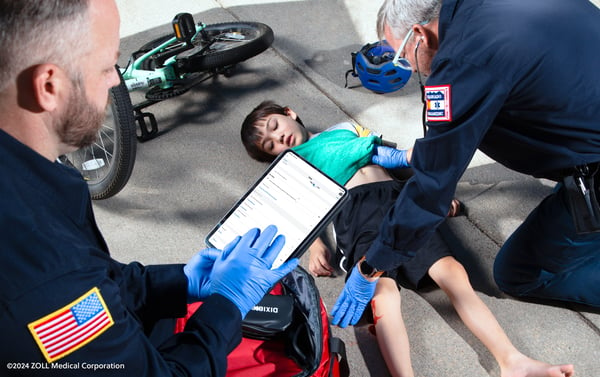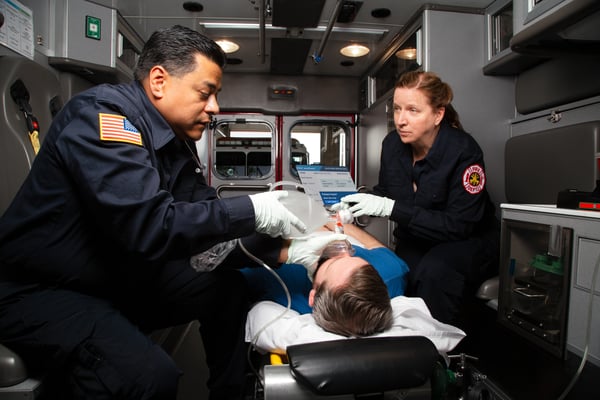Chart Smarter: Why One EMS Agency Ditched Paper for Mobile Tech
Why Do Ambulance Claims Get Denied?
A clear, concise ePCR narrative is the critical connection between high-quality patient care and thorough EMS documentation.
Was this information valuable?

Updated: May 20, 2025
Your crew’s electronic patient care reports (ePCRs) should clearly and consistently demonstrate that patients received high-quality patient care. The documentation should also make possible a clear determination regarding whether the services provided were “covered services” when processing claims. Unfortunately, it often seems that EMS leaders create a culture in which “good patient care” is somehow seen as separate from and unrelated to effective documentation of that care. On the contrary: the ePCR is the only lasting evidence of the quality of care delivered.
Paint a Complete Patient Story To Help Prevent EMS Claim Denials
In many cases, the primary reason an ambulance claim is denied isn’t because ambulance transport wasn’t medically necessary, but rather, because crew members either don’t understand or don’t care about their responsibility to carefully and completely document the patient’s condition at the time of transport on their ePCR. This results in a beneficiary being deprived of coverage and the ambulance service being denied reimbursement for the care they provided. Too often, the EMT or paramedic entrusted with caring for the patient poorly documents the patient’s condition and the treatment they received.
That is deficient patient care. Crew members need to avoid vague, meaningless words, conclusory statements, and phrases that don’t accurately convey — in appropriate clinical language — the true condition of the patient at the time of service.
Keys to Quality ePCR Documentation
Good ePCR documentation will state conclusions or findings and always describe and quantify those findings. Some phrases, such as “transported without incident,” “transferred to stretcher,” or “transported in position of comfort” are commonly used in ePCRs. Yet these add little to no value in painting an accurate, complete picture of the patient’s clinical condition. Worse yet, these seemingly innocuous phrases are often cited by Medicare claim reviewers as a key factor in denying coverage of a claim.
The importance of a well-written narrative on the ePCR can’t be overemphasized. We often hear frustration from crews because they believe they are being tasked with duplicating information already documented in checkboxes and dropdown lists.
However, a well-written narrative paints the details and clearly describes why the interventions provided were necessary. For every transport, whether emergency or non-emergency, the ePCR narrative must make clear to any reader whether the patient could have been safely transported by means other than an ambulance, or if all other means of transportation were contraindicated.
Questions that should not go unanswered include:
- Mobility status
- Ability to assist with the transfer to and from the stretcher
- How a transfer was accomplished, and why that method was used
- How the patient’s ability to care for themselves today compares to normal
A good narrative clearly documents the patient’s response to the treatments provided. In other words, after treatment, did the patient’s condition improve, and if so, how? Crews should view checkboxes and dropdown lists primarily as reminders of the various aspects of a patient’s care that should be more fully developed and clearly documented in the narrative. Quality, not quantity, should be the goal.
The clinician’s focus should be on improving the specificity of documentation so that a more accurate and descriptive picture of the patient is painted on each ePCR.
If your agency is struggling with claim denials, ZOLL Consulting Services can help. From custom software configurations to help drive higher quality documentation, to reporting and RCM optimization, our consultants can help empower your agency to use data to support better decisions and improve performance.
Related Posts
The End of Delayed Documentation
News Alert: New ePCR Integration Simplifies EMS Data Management and Enables Better Care Coordination
ZOLL Pulse Blog
Subscribe to our blog and receive quality content that makes your job as an EMS & fire, hospital, or AR professional easier.
ZOLL Pulse Blog
Subscribe to our blog and receive quality content that makes your job as an EMS, fire, hospital, or AR professional easier.




